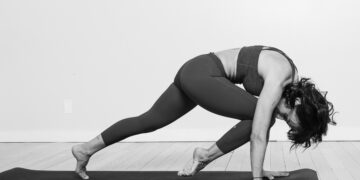Cardio doesn’t have to be the same old, same old. Read on and find out how you’ve been doing cardio wrong this whole time.
Cardio: the mere mention of the word can bring a mix of emotions to the surface. Finding a fan of this form of training can be a challenge at best. And when you finally do find someone willing to trudge it out, they are spending hours on machines, often yielding only marginal results.
Enter the age-old question: to machine, or not to machine? And if you do decide on a machine, the options just continue. Do I hop on the elliptical, stepper, StepMill, Glider, Jacobs Ladder, recumbent bike, upright bike, spin bike, or jog, walk, or run on the treadmill? There are endless ways out there to get your sweat on and stoke the fat-burning fires.
Still, machines aren’t always the best. It’s easy to fall into a routine at the  gym, always resorting to
gym, always resorting to
30 minutes of a no-brainer, robotic movement. It’s simple and doesn’t require a lot of thought or typically too much pain (depending on whether it’s taken at a steady pace or not). But if you want to see real change and real results, you need to get way out of your comfort zone. Of course, there are real benefits associated with moving your body, regardless of how you do it – but there are certain movement patterns that can yield better results for specific goals.
THE LONG HAUL Steady-state cardio workouts are very simple in structure. You perform your activity at a steady and challenging but manageable pace. (Try 60 to 70 per cent of your max capacity for 20 minutes or more, aiming for a heart rate of 120 to 150 beats per minute.) This type of training works the aerobic energy system, which means that your body requires oxygen and is fuelled mostly by stored fat.
SHORT SPURTS High-intensity interval training workouts (or HIIT) are a little more complex. For this type of training, perform your activity as hard as you can (90 to 100 per cent of your max capacity) for a brief period (usually two minutes or less), then rest (usually three minutes or less) and repeat the cycle for a predetermined period of time or number of sets. This type of training is anaerobic; during the work intervals your body doesn’t rely solely on oxygen and is fuelled mostly by stored carbohydrates. Even better: HIIT sessions are significantly shorter than endurance-based steady-state workouts, making them great timesavers too.
SO WHAT’S BEST? Studies have shown that high-intensity interval training is a more effective tool than long distance or steady-state cardio for burning fat. One reason may be the so-called afterburn effect, known in scientific circles as excess post-exercise oxygen consumption, in which the metabolism remains elevated for hours and sometimes even days after an intense workout.
Although high-intensity interval training is my personal favourite form of cardio, I typically blend  both HIIT and steadystate into my routine. In my opinion, there are benefits to each and utilizing both is the best choice for cardiovascular health.
both HIIT and steadystate into my routine. In my opinion, there are benefits to each and utilizing both is the best choice for cardiovascular health.
SPICING THINGS UP If you are finding that you are plateauing with your current routine, try incorporating intervals into your workout. For example, if you typically walk at a level four speed on the treadmill at an incline of two, pick up your pace and/or ramp up your incline every couple of minutes, then bring it back to the starting position and speed. To be honest, there really are no right or wrong intervals – it’s all about mixing up your routine, challenging yourself, and keeping your body guessing to maximize results.
When it comes to HIIT, there really are no limitations to how you can add variety and crank up the volume of your training. Try incorporating battle ropes, prowlers and sleds, sprints, medicine balls, jump rope, tire slams and flips, or box jumps. These might be just what you were looking for to spice things up, torch fat, and get your heart rate jacked.
A BODY IN BALANCE Cardiovascular exercise can measurably improve many health markers, leading to a lower body-fat percentage, improved blood pressure, a reduced risk of heart disease, an increased metabolic rate, and an amped-up V02 max (a measure of the maximum amount of oxygen your body can process, and therefore how efficient it is during exercise).
Although you might currently be caught in your own cardio conundrum, your best bet in reaching your goals is to maintain a healthy balance by varying your training styles and staying committed to your routine. Though it might be difficult or strange at first, in the end it’ll all be worth it.
WHEN IT COMES TO HIIT, THERE REALLY ARE NO LIMITATIONS TO HOW YOU CAN ADD VARIETY AND CRANK UP THE VOLUME OF YOUR TRAINING.

Follow us on Facebook.
Follow us on Instagram.
Subscribe to our Youtube channel.
















